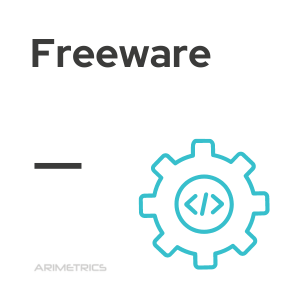Definition:
Freeware
is a computer program that is available to the public free of charge. Unlike open source software, which allows users to view and modify source code, freeware does not provide its users with such access. Freeware can be used for almost any purpose, such as word processing, image editing, and web browsing.
It can also be used to customize, extend, or add functionality to existing applications. Freeware is usually distributed free of charge over the Internet and does not require any payment for its use. Although some free programs may contain ads, most are completely free of them.
What is the origin of the Freeware concept?
It is believed that the origin of the concept of free software arose from Late 1980s as a response to commercial software that is increasingly expensive and difficult to obtain and use. While some users had access to computers and networks with which they could share programs, others had limited or no access at all. To help bridge this gap, developers began creating free programs that were available to anyone, regardless of access or technical ability.
As the popularity of free software development and distribution grew, some developers began offering their software for free but restricting its use by adding features such as time constraints or restricted access. This allowed them to generate revenue from programming while still offering users a free version of their software.
Freeware and shareware are two popular types of computer programs that have become increasingly common in recent years. Although at first glance they may seem similar, there are some key differences between these two types of software that you should be aware of before downloading or using either of them.
Freeware is a type of computer program that is available to the public for free without having to pay for its use. It does not provide users with access to view or modify its source code, but offers basic functionalities such as word processing, image editing, and web browsing.
Shareware, on the other hand, requires users to pay a fee to obtain full access and usage rights after an initial trial period has elapsed. In addition, shareware often includes additional features, such as time limitations or restricted access, that freeware does not offer.
Differences between freeware and free software
Freeware and free software may seem the same if you do not have knowledge about types of software, but there are differences between them that must be understood to make an informed decision when choosing what type of software best suits our needs.
As we have already said, freeware is a computer program that is available to the public for free, without it being necessary to pay for its use. It doesn’t provide users with access to view or modify its source code, but it does offer basic functionality like word processing, image editing, and web browsing. Free software, however, offers users full access to view and modify its source code, as well as usage rights after an initial trial period.
Freeware Examples
Freeware comes in many forms and can be used for a wide range of tasks. Popular examples of freeware include web browsers such as Mozilla Firefox and Google Chrome, media players such as VLC, antivirus programs such as Avast or AVG, and office suites such as OpenOffice and LibreOffice. Some popular games are also available as freeware, such as MineCraft and the classic Doom. In addition, there are countless programs that can be downloaded for free from various websites or that have been created by developers or organizations to meet various needs.
